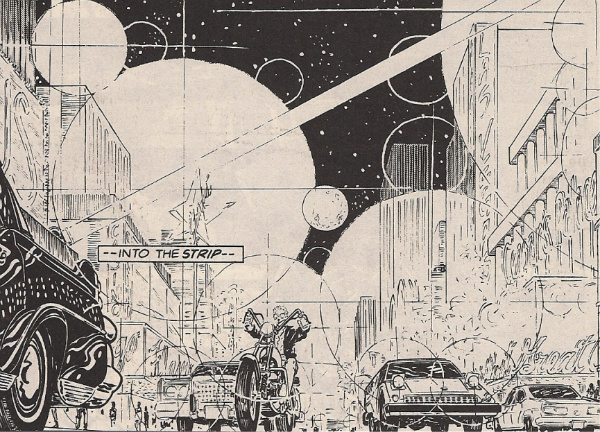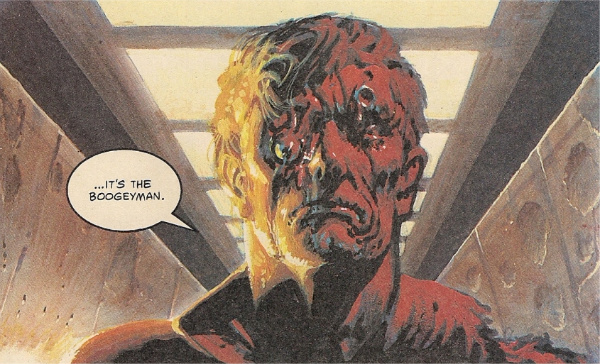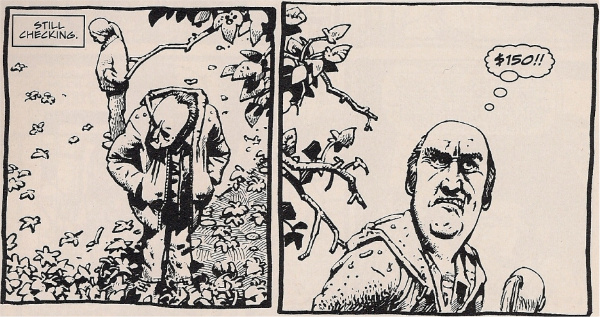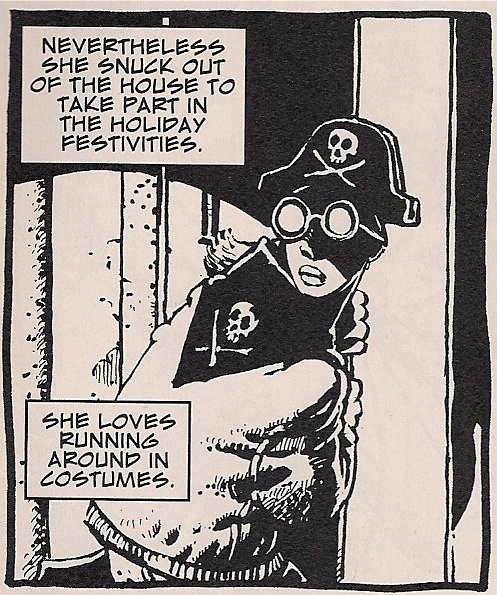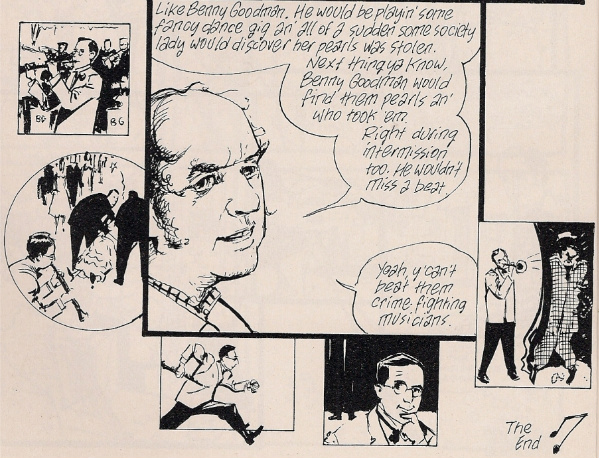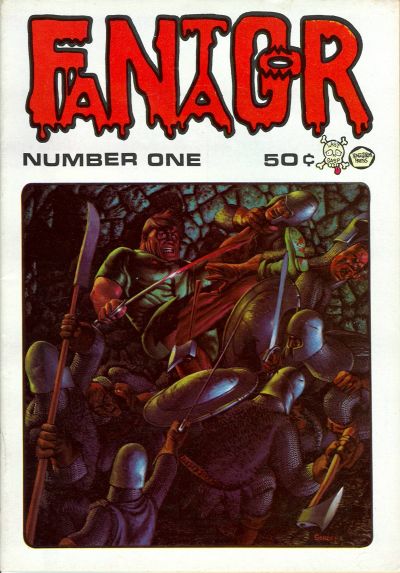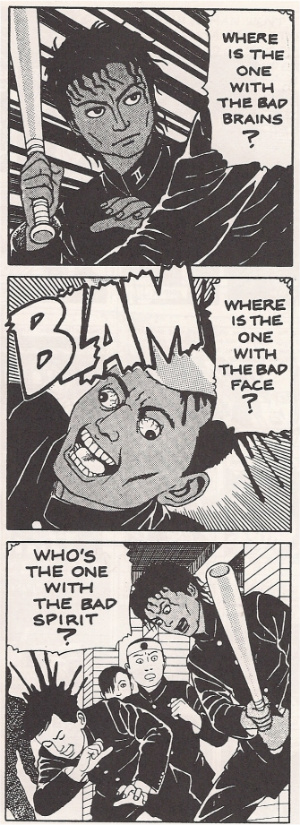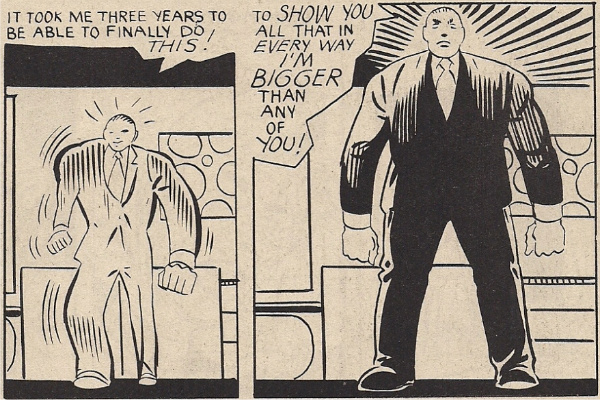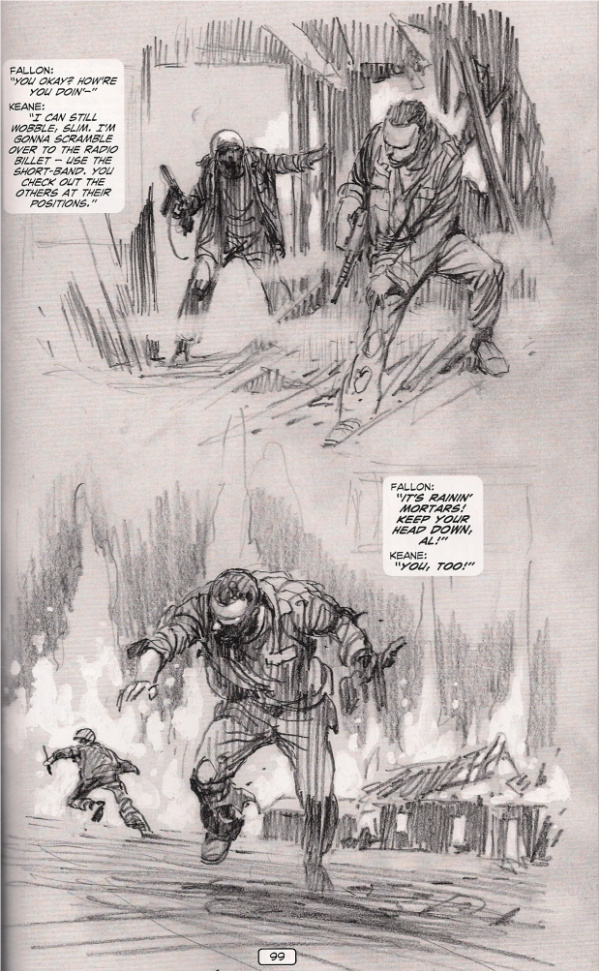THIS WEEK IN COMICS! (8/4/10 – Still No Rand Holmes Retrospective…)
by Joe McCulloch
Tuesday, August 3, 2010
Read Comments (10)
…and I’m a year older.
My birthday was last weekend, so I thought it’d be fun to page through some comics from around the blessed date; ’81 was an odd and busy time in comics, days where Creepy, Heavy Metal and RAW shared space in the form as the Direct Market grew. One magazine-styled creature of the new distribution was Eclipse, a b&w comics periodical from the publisher of the same name, not yet three years from its release of Sabre, the Don McGregor/Paul Gulacy comics album famously targeted at comic book specialty retailers. Above you see the star of the show, from the July 1981 issue #2: Marshall Rogers, then fresh off a McGregor-written album of his own, the staggeringly portentous Detectives, Inc.: A Remembrance of Threatening Green.
Ah, those precision headlights and draftsman’s rays – like François Schuiten and Tsutomu Nihei, Rogers was exposed to architectural composition before he became professional in comics, and his inevitable cityscapes are the stillest and coldest of the group. This panel is apparently intended to contrast with a lonely desert vista at the top of its page, but Rogers’ hills and plants are so sharp and precise you’d think you could cut your finger on the page, causing “the strip” to register as less a response to the wilds than an explosion of organic growth. Which could just mean a cancer, but what control!
Rogers was in every issue of Eclipse, mostly (as above) via the Steve Englehart serial Coyote, though to my mind the same team seemed far more relaxed and effective in Slab, a self-contained piece from issue #1 initially written as a Superman/Creeper story for DC Comics Presents and revamped by Rogers into something else entirely, chock-full of gleaming sci-fi structures and oddball character designs (the Creeper becomes a talking cartoon bird, for instance), then re-scripted atop by Englehart when appropriate, tongue presumably in cheek.
Still, this speaks to the makeup of Eclipse, a self-positioned mainstream-underground bridge running through comics retailers, mixing Marvel/DC veterans with Trina Robbins and Harvey Pekar and mystery prose/Dick Tracy writer Max Allan Collins, everything very sedate and straightforward, the occasional appearance by the likes of Kaz notwithstanding – you could have told me half this stuff was drawn in 1975 and I’d have believed you. That’s not exactly a criticism, but it maybe speaks to the ease with which publisher Eclipse felt its way into the delicate market, certainly without a lot of money. The magazine ended with issue #8 in 1983 to convert into a color comic book, Eclipse Monthly.
Meanwhile, no less a well-financed comics entity than Marvel was releasing issue #6 (June 1981) of Epic Illustrated, a big fat color magazine squarely positioned as a reaction to Heavy Metal. An establishment response, but god damn if those early issues in particular didn’t throw themselves into the work, oozing with paints, seared with airbrushes, and occasionally teetering on the brink of comprehensibility. Granted, much of this particular issue is taken up by Ken Steacy’s adaptation of Harlan Ellison’s Life Hutch, one of those arch separations of copious words and illustrative pictures I mentally associate with Byron Preiss (maybe I should be thinking Jim Steranko), but even that seems of a restless piece with a five-page Rick Veitch epic — intended as a double-sided foldout and reprinted as such in his 2007 Shiny Beasts collection — concerning the psychic fusion of a starship and a dude with hoses in his eyes forming a gigantic nude humanoid space weapon that has cosmic sex with a feminine Earth protector/science goddess and boils the flesh off corpulent galactic warmakers.
That’s not the melted face above, mind you; Mike Saenz was still a few years off from the digital inquiries of Shatter and Iron Man: Crash when he and writer Roy Kinnard (who’d scripted him Creepy that year too) did Flash Sport, a typical ‘guy controlled by awful people in a deadly game’ scenario unique for its video game subtext: two bratty kids putting Our Man through violent paces for laughs. An appropriate context for the computer-inclined Saenz, triumphantly depicting a bad little boy’s getting shot open all over the page at the story’s close. And then there’s Kultz, a veritable double-down by Stephen R. Bissette & Steve Perry in which the rowdy trash film-loving teen consumers at a futuristic mega-mall fall prey to a terrible film that feeds their energies back to them until they tear each other to pieces at the surreptitious behest of the store management. You might not want to take it as an allegory for the Epic Illustrated situation, but maybe it works as a nightmare of corporate control of underground and foreign energies obliterating the young and enthusiastic – a real hazard.
Yet when I look at these rackmates of 1981, it’s the Marvel magazine that seems hungry and dated and reckless – inspiration and desperation in the face of competition, while the smaller magazine shows prudence and care, that old craftsman’s quiet. Of course, they shared contributors: P. Craig Russell, Jim Starlin. They both afforded their talents ownership of their original works. They were both very traditional in the face of RAW – but their differences are fascinations of the pliable era. And anyway, reading magazines from when I was born breaks up the monotony of googling my name and gazing into mirrors.
Oh right, new comics:






